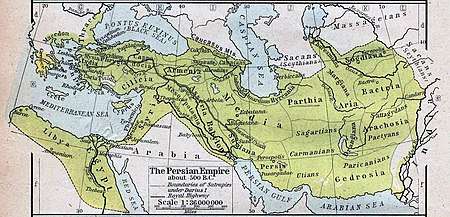Drangiana
Drangiana or Zarangiana (Greek: Δραγγιανή, Drangianē; also attested in Old Western Iranian as 𐏀𐎼𐎣, Zraka or Zranka,[3] was a historical region and administrative division of the Achaemenid Empire. This region comprises territory around Hamun Lake, wetlands in endorheic Sistan Basin on the Iran-Afghan border, and its primary watershed Helmand river in what is nowadays southwestern region of Afghanistan.



S-rw-n-g
"Zranka"
i.e "Drangiana",
on the Egyptian Statue of Darius I.[1][2]
History
In ancient times Drangiana was inhabited by an Iranian tribe which the ancient Greeks called Sarangians or Drangians. Drangiana was possibly subdued by another Iranian people, the Medes, and later, certainly, by the expanding Persian Achaemenid Empire of Cyrus the Great (559-530 BC).[4] According to Herodotus, during the reign of Darius I (522-486 BC), the Drangians were placed in the same district as the Utians, Thamanaeans, Mycians, Drangians, and those deported to the Persian Gulf. The capital of Drangiana, called Zarin or Zranka (like the Province), is identified with great probability with the extensive Achaemenid site of Dahan-e Gholaman southeast of Zabol in Iran.[5] Another significant center was the city of Prophthasia, possibly located at modern Farah in Afghanistan.[6] On occasion Drangiana was governed by the same satrap as neighboring Arachosia. In 330-329 BC, the region was conquered by Alexander the Great.[7] Drangiana continued to constitute an administrative district under Alexander and his successors. At Alexander's death in 323 BC, it was governed by Stasanor of Soloi, and later, in 321 BC, it was allotted to another Cypriot, Stasandros. By the end of the 4th century BC, Drangiana was part of the Seleucid Empire, but in the second half of the 3rd century BC it was at least temporarily annexed by Euthydemos I of Bactria. In 206-205 BC Antiochos III (222-187 BC) seems to have recovered Drangiana for the Seleucids during his Anabasis. The history of Drangiana during the weakening of Seleucid rule is unclear, but by the mid-2nd century BC the area was conquered by the expanding Parthian Empire of the Arsacids.[8]
Notes
- "Susa, Statue of Darius - Livius". www.livius.org.
- Yar-Shater, Ehsan (1982). Encyclopaedia Iranica. Routledge & Kegan Paul. p. 10. ISBN 9780933273955.
- Schmitt, Rüdiger (15 December 1995). "DRANGIANA or Zarangiana; territory around Lake Hāmūn and the Helmand river in modern Sīstān". Encyclopædia Iranica.
The name of the country and its inhabitants is first attested as Old Persian z-r-k (i.e., Zranka)in the great Bīsotūn (q.v. iii) inscription of Darius I (q.v.; col. I l. 16), apparently the original name. This form is reflected in the Elamite (Sir-ra-an-qa and variants), Babylonian (Za-ra-an-ga), and Egyptian (srng or srnḳ) versions of the Achaemenid royal inscriptions, as well as in Greek Zarángai, Zarangaîoi, Zarangianḗ (Arrian; Isidore of Charax), and Sarángai (Herodotus) and in Latin Zarangae (Pliny). Instead of this original form, characterized by non-Persian z (perhaps from proto-IE. palatal *γ or *γh), in some Greek sources (chiefly those dependent upon the historians of Alexander the Great, q.v.) the perhaps hypercorrect Persianized variant (cf. Belardi, p. 183) with initial d-, *Dranka (or even *Dranga?), reflected in Greek Drángai, Drangḗ, Drangēnḗ, Drangi(a)nḗ (Ctesias; Polybius; Strabo; Diodorus; Ptolemy; Arrian; Stephanus Byzantius) and Latin Drangae, Drangiana, Drangiani (Curtius Rufus; Pliny; Ammianus Marcellinus; Justin) or Drancaeus (Valerius Flaccus, Argonautica 6.106, 6.507) occurs.
- Schmitt (1995).
- Gnoli (1993)
- Schmitt (1995).
- Schmitt (1995).
- Schmitt (1995).
References
- Schmitt, Rüdiger (15 December 1995). "DRANGIANA or Zarangiana; territory around Lake Hāmūn and the Helmand river in modern Sīstān". Encyclopædia Iranica.
- G. Gnoli, "Dahan-e Ḡolāmān," Encyclopaedia Iranica, vol. 6 (1993) 582-585.
- Drangiana by Jona Lendering
- R. Schmitt, "Drangiana," Encyclopaedia Iranica, vol. 7 (1995) 534-537.
